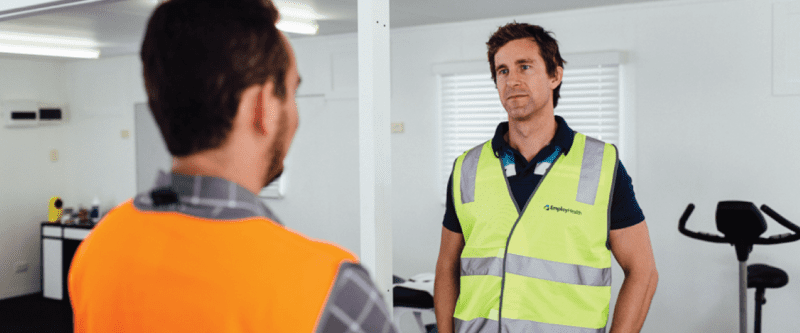Workplace audiometric testing is required by the many state Health and Safety regulations. Audiometric testing is recommended on an annual basis. It is recommended that annual audiometric testing be undertaken particularly when there is potential exposure to ototoxic agents or hand arm vibration (HAV).
What Is A Workplace Audiometric Test Program?
Before a worker commences their position in a noisy environment, Audiometric testing should be conducted, or at least within 3 months. This is to establish whether a person may have significant hearing loss that may otherwise be wholly attributable to their prior employment. Pre-employment audiometric testing is essential to assist in limiting liability and workers compensation premiums resulting from noise induced hearing loss.
Our Audiometric Test Procedure
Audiometric testing is a simple procedure where a series of tones are presented to a person to which they respond, indicating that the person has heard a tone.
Step 1
Initially an Employ Health representative will conduct sound testing for the nominated rooms at the workplace. Once a room passes the ANZ regulated requirements the space can be set up with the appropriate equipment to test employee hearing. The worker can then be set up in this room for the hearing tests to be conducted.
Step 2
The tones are presented at different sound levels to then record the lowest level at which a person can hear. This is called the threshold limit. The audiometric testing is conducted for different frequencies and for the right ear and then the left ear.

Types Of Audiometry Screening
Hearing Threshold Level
In audiometry, a “Hearing Threshold Level” (or HTL) is defined as: the softest sound a person can hear, 2 out of 3 times or at least 50% of the time”. We find this “Hearing Threshold Level” by using an “audiometer”, an instrument used to test a person’s hearing sensitivity. A person with normal hearing should have a “Hearing Threshold Level” of 20 dB or less at all frequencies.

Reference Test
Audiometry must be carried out in an environment which is relatively free from noise, for two reasons:
1. To prevent disturbance / distraction by outside noise during the test.
2. To ensure that zero dB of the hearing threshold level can be achieved by reducing background noise levels.
If the background noise is too high, the results from the audiogram will be incorrect as the background noise will decrease the patient’s ability to hear the very softest sounds.

Monitoring Test
Ongoing monitoring testing can be conducted over a period of time to assist in ensuring that there are no future noise risks to the workplace or workers.
Audiometric Assessment With Employ Health
Employ Health partners with businesses to provide integrated workplace health solutions. We treat hearing test programs as an opportunity to engage with your workforce to improve their health and the health of your business and can incorporate hearing test programs into an overall vision to transition your business from reactive to proactive and predictive workplace health.
Our team of workplace physiotherapists are trained in workplace audiometric testing allowing them to conduct baseline hearing tests at pre-employments screening and also monitoring tests as required.
- Friendly onsite service
- Trained physiotherapists
- Ability to combine with other workplace testing if also required
Frequently Asked Questions
An audiometry exam tests how well your hearing functions. It tests both the intensity and the tone of sounds, balance issues, and other issues related to the function of the inner ear.
If as an employer you issue hearing protection to your employees, then the WHS/OHS Act/Regulations in your state requires an employer to submit its employees for Audiometric testing once every 2 years, or more frequently if your employees are exposed to higher levels of hazardous noise.
They can if they wish to, but would ideally involve a discussion with the relevant workplace managers to understand their reasons.
We include as part of our service a complete summary of the audiometric screening test results, and an analysis of employee tests with previous results and all relevant documentation to achieve legal compliance.
